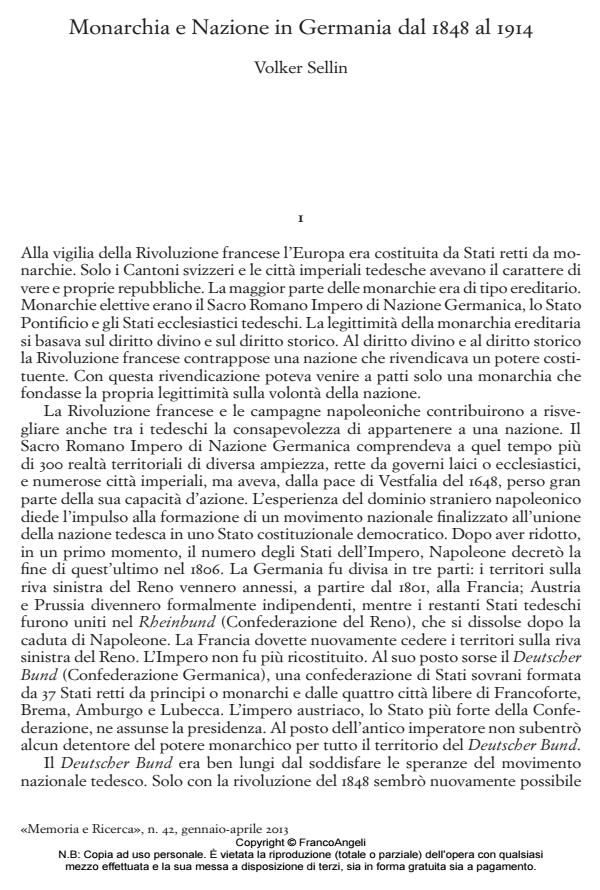Monarchy and Nation in Germany (1848-1914)
Journal title MEMORIA E RICERCA
Author/s Volker Sellin
Publishing Year 2013 Issue 2013/42
Language Italian Pages 18 P. 33-50 File size 133 KB
DOI 10.3280/MER2013-042004
DOI is like a bar code for intellectual property: to have more infomation
click here
Below, you can see the article first page
If you want to buy this article in PDF format, you can do it, following the instructions to buy download credits

FrancoAngeli is member of Publishers International Linking Association, Inc (PILA), a not-for-profit association which run the CrossRef service enabling links to and from online scholarly content.
During the revolution of 1848 the Frankfurt national assembly failed in their attempt to create a German national state by reconciling the existing monarchies with popular sovereignty. When in 1871 the unification of Germany was accomplished under Prussian leadership, the monarchical principle was respected. The preservation of the monarchies, however, had made the exclusion of the multi-national Austrian empire and of the Austrian Germans from the process of German national unification inevitable, since Austria refused to accept division into a German and a non-German part, connected by personal union only. Ideologically, the new Reich was styled as a restoration of the Holy Roman Empire, regardless of the fact that it was national and not universal and that the Hohenzollern dynasty of Prussia was protestant and not catholic. While monarchy in Germany was increasingly identified with the national emperor alone, the visibility and political importance of the other German princes declined.
Keywords: German unification, Frankfurt national assembly, monarchical principle, German empire of 1871, Austrian question, national and monarchical monuments
Volker Sellin, Monarchia e Nazione in Germania dal 1848 al 1914 in "MEMORIA E RICERCA " 42/2013, pp 33-50, DOI: 10.3280/MER2013-042004